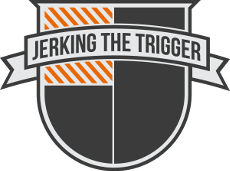B5 Systems is one of those companies that you might not know a whole lot about right now… but you will. They are a manufacturing company that made a pretty big splash when they got the military contract to manufacture the Enhanced SOPMOD Buttstock and then subsequently brought it to the consumer market for half the cost of what it was available for previously.
They recently made an even bigger splash when their new stock, the Bravo SOPMOD Stock, was selected to be used on the HSP/BCM JACK Carbine. The Bravo is now showing up on dealer shelves and I was able to get my hands on one, along with an Enhanced SOPMOD, for review.
Overview
The form of the Bravo is rooted in the design of the original Enhanced SOPMOD Stock. The Enhanced SOPMOD Stock has battery storage tubes integrated into both sides of the stock. These battery storage tubes create a very distinctive cheek weld that is very comfortable and repeatable. However, many users probably don’t need the storage tubes so B5 created the Bravo to retain all of the best qualities of the Enhanced SOPMOD Stock without the battery tubes.
The Bravo retains the excellent cheek weld of the Enhanced SOPMOD Stock, though it is slightly narrower through this area of the stock. It also retains the easily removable rubber butt plate and rotation limited QD sling swivel socket. Apart from the slightly narrower profile, it also differs in that the butt of the stock is slightly more angled and the adjustment lever has been streamlined. The Bravo stock is very nearly an Enhanced SOPMOD Stock without the battery tubes – and that is a very, very good thing.
Observations from Use
The Bravo is a classic case of “addition by subtraction.” The removal of the battery tubes has made this stock lighter in weight and considerably less expensive. Both of those are wins if you, like many users, don’t use or need the battery storage.
As I said earlier, the Bravo SOPMOD Stock retains the excellent cheek weld of the Enhanced SOPMOD Stock. I find the cheek weld on these stocks to not only be very comfortable but very repeatable. It is comfortable because it contacts your face over a broader area. I find it more repeatable because it offers 2 index points instead of 1. The cheek weld area extends from my cheek bone down to an area on my jaw. I can feel or index the stock in both places which makes it easier to make sure I am placing my head consistently on the stock. This cheek weld is part of why the Enhanced SOPMOD is such a popular stock on light precision builds like RECCE and DMR carbines. Thankfully, the Bravo has the same great cheek weld.
The SOPMOD Stocks from B5 (and the earlier LMT versions) have always had some of the best fit of any stocks. They tend to fit tightly on the receiver extension (buffer tube) but not so tight that they can’t be adjusted easily. In other words, the fit is usually perfect and the Bravo is no exception. It offers a rattle free fit that adjusts easily.
I have always liked the aggressively rounded butt pad on the SOPMOD stocks. It allows the carbine to be rolled up from a low ready position very easily. The butt pad on the Bravo is identical and interchangeable with the Enhanced SOPMOD Stock. However, the Bravo’s butt plate is slightly more angled than the Enhanced SOPMOD Stock. The slightly angled butt plate of the Bravo does seem to engage the shoulder pocket a bit more positively but this could be pretty subjective.
The Bravo weighs 8.25 ounces which is 2 ounces less than the Enhanced SOPMOD Stock at 10.25 ounces. That makes the Bravo one of the lighter aftermarket stocks available while still being very feature rich. I think the Bravo has to be the new value leader when it comes to AR-15 stocks. For instance, the Magpul MOE Stock (and excellent stock and a good value in its own right) costs about the same and weighs exactly the same but lacks a QD sling swivel socket and doesn’t fit the receiver extension as well as the Bravo.
Wrap Up
I am not sure that there is a better value in stocks than the Bravo. It offers nearly everything that shooters love about the Enhanced SOPMOD Stock including the great cheek weld, great receiver extension fit, QD sling swivel socket, and rubber butt pad. However, by removing the battery tubes, B5 Systems has made the Bravo lighter and less expensive than many of its competitors while offering a stock with more features. That is pretty tough to beat.
I suspect that given the price point of the Bravo, that you are going to see more and more manufacturers offering the Bravo as an OEM stock like HSP and BCM have done with the JACK Carbine. That will be a win for consumers because this is an excellent stock at a great price.
Check out the Bravo SOPMOD and Enhanced SOPMOD Stocks on B5Systems.com.























